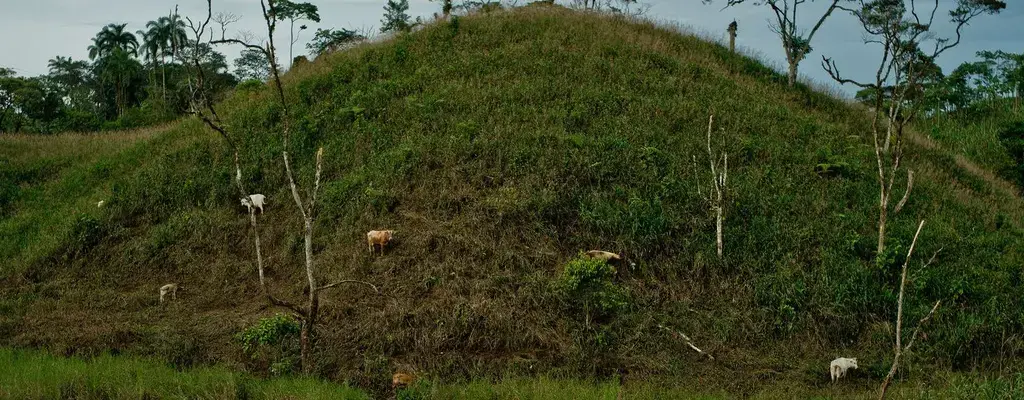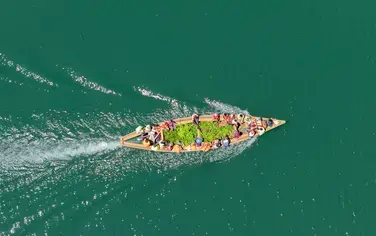This post originally appeared on Landscapes News here.
NAIROBI (Landscapes News) – Rangelands cover almost half the world’s land surface. Consisting mainly of grasses, and plants, they have often been considered barren lands that should be converted to agriculture.
In reality, they are neither fit for cultivation, nor empty or sterile: they have been sustainably managed for centuries by pastoralists that migrate seasonally with their herds and transform the scarce vegetation into high-value animal products, said delegates attending the Global Lansdcapes Forum (GLF) conference in Nairobi.
The session “Bringing Rangelands into the Sustainable Landscapes Agenda” included researchers, practitioners, communities and policy-makers to address the issue.
Speaking on the sidelines of the forum, Abdelkader Bensada, UN Environment program management officer, explained why no comprehensive landscape restoration can occur without rangelands, and how UN Environment is spearheading a movement to put them on global development and sustainability agenda.
Q: Landscape restoration is often associated with forests. Why is it important to take rangelands into account, especially in Africa?
A: Rangelands constitute one third of the global land surface and at least 40 percent of the land in Africa. This means we cannot talk about restoration in the continent without taking rangelands into account, which include shrub lands, grasslands, savannas and even woodlands.
The African Restoration Initiative (AFR100), for example, aims to bring 100 million hectares of land into restoration by 2030 to contribute to the Bonn Challenge (a larger target to restore 350 million hectares of land worldwide). Among its champions are Niger and Ethiopia, which are rangeland countries together with Kenya, Tanzania, Uganda, South Sudan and Sahelian states, to name a few.
Q: Beyond their extension, why do rangelands matter from an environmental, development and climate perspective?
A: They are crucial in terms of food security, terrestrial biodiversity and climate change mitigation. In Africa, around 70 percent of the agriculture revolves around livestock and rangelands. These landscapes are a prime source of meat, milk, leather and fibers for millions of people across the continent. In some countries, they contribute up to 35 percent of the gross domestic product (GDP).
The carbon storage potential of rangelands is also huge, given their extension and the fact that soil is the main carbon sink after the ocean. In addition, rangelands are one of the most adaptive systems, as shown by the resilience of mobile pastoralists, and they are an integral part of traditional cultures —from Norway to Mongolia to the Sahel.
Q: When assessing restoration opportunities, countries often fail to address land and tree tenure and to consider how pastoralists’ rights may affect or be affected by implementation. How can this impact restoration efforts in Africa?
A: Secure land tenure is an incentive for local communities to engage in restoration and bring it to scale. Countries often claim that rangelands belong to the state, when they have actually been inhabited by nomadic livestock owners for generations.
Hampering the seasonal migration of pastoralists and their herds, up to the point of trying to sedentarize them, has affected their livelihoods and compromised the long-term sustainability of rangelands.
Q: In which ways are livelihoods and landscapes affected by attempts to erode mobile pastoralism?
A: Pastoralists being forced to give up on their mobile lifestyle find themselves buying the very animal products they used to produce and are losing their traditional knowledge. In addition, keeping livestock in a single area leads to severe degradation of the rangeland.
In Jordan, I’ve seen houses for pastoralists built in the middle of nowhere —tiny concrete blocks with a couple of rooms. They could not live there. So they kept the goats indoors and slept outside instead.
Q: Agriculture and livestock rearing are among the main drivers of deforestation and forest degradation, and sustainable intensification is put forward as a way to reverse these trends. What is your take on that?
A: The global population is expected to reach 10 billion by 2100, and we see a growing number of incentives for people to grow crops in marginal areas and rangelands, which are not fit for cultivation. As a result, pastoralists’ access to land and resources is increasingly restricted, including in the Sahel.
So what is the way forward? This is what we have been discussing at the GLF in Nairobi. To me, the only solution is getting sectors to set common objectives and work together at the landscape level.
Embracing an integrated approach to ecosystem management is not only cost-effective, but the only way for us to meet the U.N. Sustainable Development Goals (SDGs).
Q: What are the next steps to foster rangeland protection and restoration?
A: We hope that U.N. member states approve the proposals to have a U.N. Decade on Ecosystem Restoration and an International Year of Rangelands and Pastoralism in 2022. It is now critical to raise the profile of restoration and rangelands in the global agenda, and to build synergies between these complementary issues.
Greater visibility and acknowledgement is particularly important for rangelands, which have been neglected in spite of their huge contribution to food security and economic resilience. Look at pastoralists: they are usually among the poorest communities in their countries.
Q: In 2016, the U.N. Environment Assembly passed a resolution —proposed by African member states— to encourage sustainable rangelands and pastoralism and to combat desertification and land degradation. How is that commitment coming along?
A: Countries requested UN Environment and partner organizations to develop a gap analysis. That is, to find out which information is missing, and which additional data is necessary to make the case for rangelands and pastoralism at the highest level.
We have examined more than 3,000 articles and assessments, but this is nothing compared to the information available on forests and agriculture. We hope to launch the report within the next two months.
The time has come for rangelands and pastoralism to position themselves high up the international agenda and within the restoration movement.




